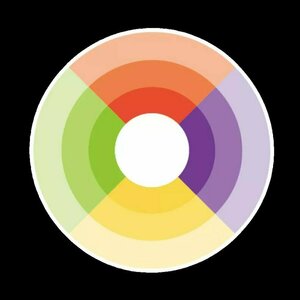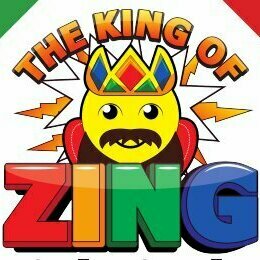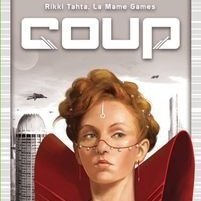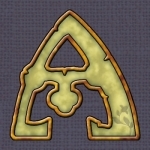Search
Search results
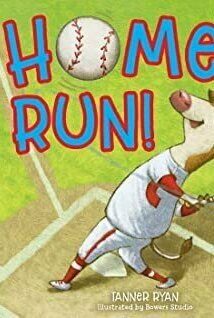
HomeRun! My First Baseball Game
Book
<b>Take kids out to their very first ballgame in this adorable storybook for our youngest fans!</b> ...
Sports Children Kids Toddlers Board book Animals

The Last One
Book
Caz Ripley, a cafe owner from a small, ordinary town, boards the RMS Atlantica with her boyfriend...
David McK (3649 KP) rated Lift (2024) in Movies
Mar 21, 2024
Heist movie mainly starring Kevin Hart (in a mostly light hearted role) and Gugu Mbatha-Raw as the two leads (with room for the likes of Sam Worthington, Jean Reno and Vincent d'Onofrio most noticeably), with the former a master thief and the latter an intelligence agent - each of whom previously fell for the other, when both undercover - who have to put aside their past differences and lead a heist on board an aircraft in flight (hence the double meaning behind the name 'lift'), transporting gold to a terrorist.
I watched this mainly so I could play spot-the-location (some of it being filmed in my home country of Northern Ireland), but have to say it was also better than I was expecting!
I watched this mainly so I could play spot-the-location (some of it being filmed in my home country of Northern Ireland), but have to say it was also better than I was expecting!
Purple Phoenix Games (2266 KP) rated Aroma in Tabletop Games
Feb 20, 2021
Hello. My name is Travis and I have a big nose. It has always been big, and I used to tell people that it is so because I could smell so much better than everyone else. For a while this was partly true. However, as I age I find that I am less and less amazing than I thought I was when I was younger. Enter a game that revolves around actually using this schnoz and its wonderful ability and I thought I would have it in the bag! I was wrong. Again.
Aroma is a board game that originates from an essential oil company wishing to produce a board game utilizing its oils. Designer Odd Hackwelder then crafted a board game utilizing said essential oils that can be played four different ways. That’s right, Aroma is a game with four different play modes. Most of the modes revolve around the ability to guess the correct scent to score points. For this review I will be referencing rules for the Revolve mode with four players.
DISCLAIMER: We were provided a copy of this game for the purposes of this review. This is a retail copy of the game, so what you see in these photos is exactly what would be received in your box. I do not intend to cover every single rule included in the rulebook, but will describe the overall game flow and major rule set so that our readers may get a sense of how the game plays. For more in depth rules, you may purchase a copy online or from your FLGS. -T
To setup a game of Revolve each player will choose one of the themed player boards and bits from the following: Citrus, Trees, Plants, Floral. They will lay the boards touching in the middle of the table and their oil trays with essential oil bottles in front of them. Each player will also receive the wooden player token and scent tokens in their color. Place the wooden player tokens on the point tracker zero space and the game is setup to begin!
Revolve is played in rounds where each player will choose one of their oil vials from their tray, place its matching scent token face-down on their board and pass it to the player on their left simultaneously. The players then take the vials just given to them, smell the oils inside and try to guess its content scent by choosing the appropriate scent token and placing it face-down on the board in front of them as well. Play continues in this fashion until all players have smelled the vials from all players and made their guesses.
Players then flip over their scent tokens to compare what was given to them throughout the round and they will score points based on how many were guessed correctly. The players then choose a different vial and the process starts anew. The game ends at the end of the fourth round and the player with the most correct guesses is the winner!
Components. This game has pretty amazing components. The oil trays with the little oil bottles are great, but a little flimsy. The boards and scent tokens are thick, and the wooden player pieces are nice and medium-sized. The overall look of the game is very clean and colorful, reminiscent of the art style in T.I.M.E Stories, but with more colors and smells. Aside from the flimsy cardboard used in the oil trays, the rest of the components are top notch. I do have one gripe: the oil bottles themselves sometimes take quite a bit of effort to get the smell going. We tried manually rolling with our fingers, and the suggested technique of rolling on a sheet of paper (we used a paper napkin). The best way was to just drench oneself in essential oil by manually rolling the ball with one’s finger.
As a game Aroma’s Revolve is interesting and invokes feelings not normally used to describe board games. I have not played another game like it, nor one that I can remember using my sense of smell at all. For this point alone I feel attracted to Aroma. However, smelling all the scents over and over can sometimes get a little overwhelming for me. I KNOW what a lemon smells like, but when you pass around a vial and I sniff it, I feel like I am smelling lemon. When the card is revealed and it is actually grapefruit I just smelled I become frustrated. I guess I never realized how closely many things smell to other items in the same family. I like to reminisce about the first time I ever smelled pine, or its unmistakable scent down in my wood shop. But the pine scent in Aroma doesn’t really smell like pine to me. Maybe my snout is aging faster than I thought, but I am really no good at picking out some of these scents.
I have also played the Survive mode with just my wife and of course she always beats me. Survive is the only mode that is designed for two players, and I wish there were more. Getting together during the lockdown is difficult, and I game mostly with my wife. That said, on the rare occasion I got to play games with another couple in our quarantine pod I wanted to break Aroma out and try a different mode. Revolve is good, and Survive is good too, but I would prefer both with the full compliment of players.
If you are looking for something completely different for your collection, Aroma is it. I don’t know if it will make many gamers’ Top 10 lists, but it is so interesting to use the sense of smell in a board game that I think it is almost essential (see what I did there?). I mean that Aroma currently has no competition in the same space, so it will not be replaced by another similar game for quite some time, I’m sure. And what guest wouldn’t be impressed by playing a board game that includes 20 vials of essential oil? How novel is that, anyway? Purple Phoenix Games gives this one a lovely-sniffed 8 / 12. Do be warned: Aroma may accidentally perfume some other games it is stored near, but the scent is pleasant. At least I THINK it is. Now I’m doubting my ability to smell anything correctly.
Aroma is a board game that originates from an essential oil company wishing to produce a board game utilizing its oils. Designer Odd Hackwelder then crafted a board game utilizing said essential oils that can be played four different ways. That’s right, Aroma is a game with four different play modes. Most of the modes revolve around the ability to guess the correct scent to score points. For this review I will be referencing rules for the Revolve mode with four players.
DISCLAIMER: We were provided a copy of this game for the purposes of this review. This is a retail copy of the game, so what you see in these photos is exactly what would be received in your box. I do not intend to cover every single rule included in the rulebook, but will describe the overall game flow and major rule set so that our readers may get a sense of how the game plays. For more in depth rules, you may purchase a copy online or from your FLGS. -T
To setup a game of Revolve each player will choose one of the themed player boards and bits from the following: Citrus, Trees, Plants, Floral. They will lay the boards touching in the middle of the table and their oil trays with essential oil bottles in front of them. Each player will also receive the wooden player token and scent tokens in their color. Place the wooden player tokens on the point tracker zero space and the game is setup to begin!
Revolve is played in rounds where each player will choose one of their oil vials from their tray, place its matching scent token face-down on their board and pass it to the player on their left simultaneously. The players then take the vials just given to them, smell the oils inside and try to guess its content scent by choosing the appropriate scent token and placing it face-down on the board in front of them as well. Play continues in this fashion until all players have smelled the vials from all players and made their guesses.
Players then flip over their scent tokens to compare what was given to them throughout the round and they will score points based on how many were guessed correctly. The players then choose a different vial and the process starts anew. The game ends at the end of the fourth round and the player with the most correct guesses is the winner!
Components. This game has pretty amazing components. The oil trays with the little oil bottles are great, but a little flimsy. The boards and scent tokens are thick, and the wooden player pieces are nice and medium-sized. The overall look of the game is very clean and colorful, reminiscent of the art style in T.I.M.E Stories, but with more colors and smells. Aside from the flimsy cardboard used in the oil trays, the rest of the components are top notch. I do have one gripe: the oil bottles themselves sometimes take quite a bit of effort to get the smell going. We tried manually rolling with our fingers, and the suggested technique of rolling on a sheet of paper (we used a paper napkin). The best way was to just drench oneself in essential oil by manually rolling the ball with one’s finger.
As a game Aroma’s Revolve is interesting and invokes feelings not normally used to describe board games. I have not played another game like it, nor one that I can remember using my sense of smell at all. For this point alone I feel attracted to Aroma. However, smelling all the scents over and over can sometimes get a little overwhelming for me. I KNOW what a lemon smells like, but when you pass around a vial and I sniff it, I feel like I am smelling lemon. When the card is revealed and it is actually grapefruit I just smelled I become frustrated. I guess I never realized how closely many things smell to other items in the same family. I like to reminisce about the first time I ever smelled pine, or its unmistakable scent down in my wood shop. But the pine scent in Aroma doesn’t really smell like pine to me. Maybe my snout is aging faster than I thought, but I am really no good at picking out some of these scents.
I have also played the Survive mode with just my wife and of course she always beats me. Survive is the only mode that is designed for two players, and I wish there were more. Getting together during the lockdown is difficult, and I game mostly with my wife. That said, on the rare occasion I got to play games with another couple in our quarantine pod I wanted to break Aroma out and try a different mode. Revolve is good, and Survive is good too, but I would prefer both with the full compliment of players.
If you are looking for something completely different for your collection, Aroma is it. I don’t know if it will make many gamers’ Top 10 lists, but it is so interesting to use the sense of smell in a board game that I think it is almost essential (see what I did there?). I mean that Aroma currently has no competition in the same space, so it will not be replaced by another similar game for quite some time, I’m sure. And what guest wouldn’t be impressed by playing a board game that includes 20 vials of essential oil? How novel is that, anyway? Purple Phoenix Games gives this one a lovely-sniffed 8 / 12. Do be warned: Aroma may accidentally perfume some other games it is stored near, but the scent is pleasant. At least I THINK it is. Now I’m doubting my ability to smell anything correctly.
Purple Phoenix Games (2266 KP) rated The King of ZING in Tabletop Games
Feb 27, 2021
Board game design these days has taken quite an innovative turn – with the creation of new mechanics, combination of game styles, and unique themes being introduced. It seems that everywhere you look, there is something new! That doesn’t mean we have to give up on the classic mechanics and gameplay styles, though, and thats where The King of Zing comes into play.
The King of Zing is a card game of take-that and hand management in which players are trying to be the first to reach 100 points. Sounds simple enough, right? Well, throw some Specialty cards into the mix that allow opponents to manipulate your turn strategy, and even occasionally place their own tokens on your board, and you’ve got quite a strategic conundrum!
DISCLAIMER: We were provided a prototype copy of this game for the purposes of this review. These are preview copy components, and I do not know for sure if the final components will be any different from these shown. Also, it is not my intention to detail every rule in the game, as there are just too many. You are invited to download the rulebook, back the game through the Kickstarter campaign, or through any retailers stocking it after fulfillment. -T
To setup for a game of The King of Zing, first place the board in the center of the table. Shuffle the deck of cards, dealing 5 to each player, and give players the 25 tokens in their chosen color. (Note: This prototype did not include tokens, so I improvised and borrowed some from another game. The final tokens will not look like the ones pictured below!). Place the remaining cards on the Deck space of the board, creating a draw deck, and flip over the top card to the Discard space. Choose a starting player, and the game is ready to begin!
Throughout the game, you will be drawing or playing cards. At the start of your turn, you will either draw the top card of the Draw deck, or take the top card of the Discard pile into your hand. If the card you drew matches your chosen color, you may immediately play it to your Grave (personal discard pile) and place one of your tokens onto your player board on the corresponding number, thus ending your turn. Otherwise, once you draw a card, you can do the following: select a card from your hand to go in the communal Discard pile, play a Specialty card, place a card from your hand face-up or face-down onto any player’s open Hold space, or play the face-down card from your own Hold space. **Important note** If there is ever a face-up card in your Hold at the start of your turn, you must play it and your turn ends. (This could be a strategic way to encumber opponents!). Play continues in this fashion until a player has collected 4 tokens in a row on their player board. Points are then scored (based on the number of tokens you played), and then the game resets – a series of games is played until one player reaches 100 points and is declared the ultimate winner!
The first thing I want to touch on is the rulebook for The King of Zing. As far as rulebooks go, it is not my favorite. There are some areas of ambiguity that left me confused, and it definitely took several read-throughs and a couple of false-starts at playing to figure out exactly how the gameplay flows. Being a prototype copy of the game, I imagine that editing/rewriting of the rulebook is something that will happen before final production.
Next, the overall gameplay. The different elements are reminiscent of other classic games – getting 4 tokens in a row a la Connect 4, the use of Specialty cards (Reverse, Skip, etc.) a la UNO. In their respective games, these mechanics work well, but how do they work together in The King of Zing? For the most part, I would say they work relatively well together. The mechanics compliment each other and feel logical in play. Probably the most unique aspect of Zing for me is the Hold space for each player. The ability to play cards to Hold spaces, either your own or of an opponent, gives you the opportunity to either plan a strategy/turn in advance, or potentially hinder an opponent. Playing a card face-up to a Hold guarantees that it will be played on the next turn, so not only are you planning ahead, but also broadcasting your move to your opponents. Conversely, a card played face-down could be resolved in any future turn, and can be a battle of risk/reward when played by opponents. A card played to my Hold face-down could just be a useless card for me, causing me to waste a turn to resolve it. BUT, what if an opponent gives you a card you actually need face-down – you don’t know that it is useful, but are you willing to risk a wasted turn to find out? The Hold space adds a new twist to the game that elevates the gameplay.
Components. Zing consists of a board and a big stack of cards. The board is nice and sturdy, the play areas clearly marked. The cards are colorful and thick, and the art is mostly minimal. The Specialty cards have a short description of their use printed on the card, but a more in-depth explanation can be found in the rulebook. As I stated above, this copy did not have any player tokens, so I cannot comment on how those will look in final production. All in all, a decent production quality.
All in all, The King of Zing feels like a take on an old classic. The gameplay incorporates several tried-and-true mechanics, and the flow of the game is pretty straightforward. The rulebook even suggests some gameplay variations, so The King of Zing can be played with gamers as young as 4 years old. Ultimately, the rulebook needs an overhaul, but the skeleton of the game seems to hold up. If you’re looking for something that brings back some nostalgia for older games, try The King of Zing.
The King of Zing is a card game of take-that and hand management in which players are trying to be the first to reach 100 points. Sounds simple enough, right? Well, throw some Specialty cards into the mix that allow opponents to manipulate your turn strategy, and even occasionally place their own tokens on your board, and you’ve got quite a strategic conundrum!
DISCLAIMER: We were provided a prototype copy of this game for the purposes of this review. These are preview copy components, and I do not know for sure if the final components will be any different from these shown. Also, it is not my intention to detail every rule in the game, as there are just too many. You are invited to download the rulebook, back the game through the Kickstarter campaign, or through any retailers stocking it after fulfillment. -T
To setup for a game of The King of Zing, first place the board in the center of the table. Shuffle the deck of cards, dealing 5 to each player, and give players the 25 tokens in their chosen color. (Note: This prototype did not include tokens, so I improvised and borrowed some from another game. The final tokens will not look like the ones pictured below!). Place the remaining cards on the Deck space of the board, creating a draw deck, and flip over the top card to the Discard space. Choose a starting player, and the game is ready to begin!
Throughout the game, you will be drawing or playing cards. At the start of your turn, you will either draw the top card of the Draw deck, or take the top card of the Discard pile into your hand. If the card you drew matches your chosen color, you may immediately play it to your Grave (personal discard pile) and place one of your tokens onto your player board on the corresponding number, thus ending your turn. Otherwise, once you draw a card, you can do the following: select a card from your hand to go in the communal Discard pile, play a Specialty card, place a card from your hand face-up or face-down onto any player’s open Hold space, or play the face-down card from your own Hold space. **Important note** If there is ever a face-up card in your Hold at the start of your turn, you must play it and your turn ends. (This could be a strategic way to encumber opponents!). Play continues in this fashion until a player has collected 4 tokens in a row on their player board. Points are then scored (based on the number of tokens you played), and then the game resets – a series of games is played until one player reaches 100 points and is declared the ultimate winner!
The first thing I want to touch on is the rulebook for The King of Zing. As far as rulebooks go, it is not my favorite. There are some areas of ambiguity that left me confused, and it definitely took several read-throughs and a couple of false-starts at playing to figure out exactly how the gameplay flows. Being a prototype copy of the game, I imagine that editing/rewriting of the rulebook is something that will happen before final production.
Next, the overall gameplay. The different elements are reminiscent of other classic games – getting 4 tokens in a row a la Connect 4, the use of Specialty cards (Reverse, Skip, etc.) a la UNO. In their respective games, these mechanics work well, but how do they work together in The King of Zing? For the most part, I would say they work relatively well together. The mechanics compliment each other and feel logical in play. Probably the most unique aspect of Zing for me is the Hold space for each player. The ability to play cards to Hold spaces, either your own or of an opponent, gives you the opportunity to either plan a strategy/turn in advance, or potentially hinder an opponent. Playing a card face-up to a Hold guarantees that it will be played on the next turn, so not only are you planning ahead, but also broadcasting your move to your opponents. Conversely, a card played face-down could be resolved in any future turn, and can be a battle of risk/reward when played by opponents. A card played to my Hold face-down could just be a useless card for me, causing me to waste a turn to resolve it. BUT, what if an opponent gives you a card you actually need face-down – you don’t know that it is useful, but are you willing to risk a wasted turn to find out? The Hold space adds a new twist to the game that elevates the gameplay.
Components. Zing consists of a board and a big stack of cards. The board is nice and sturdy, the play areas clearly marked. The cards are colorful and thick, and the art is mostly minimal. The Specialty cards have a short description of their use printed on the card, but a more in-depth explanation can be found in the rulebook. As I stated above, this copy did not have any player tokens, so I cannot comment on how those will look in final production. All in all, a decent production quality.
All in all, The King of Zing feels like a take on an old classic. The gameplay incorporates several tried-and-true mechanics, and the flow of the game is pretty straightforward. The rulebook even suggests some gameplay variations, so The King of Zing can be played with gamers as young as 4 years old. Ultimately, the rulebook needs an overhaul, but the skeleton of the game seems to hold up. If you’re looking for something that brings back some nostalgia for older games, try The King of Zing.

Family Practice Exam Review
Medical and Book
App
An engagingly written case-based review for the Family Medicine Board Examination and the USMLE Step...

Skateboard Party 3 Pro
Games and Sports
App
Skateboard Party is back! This third edition of the popular sports franchise features professional...
Matthew Krueger (10051 KP) rated Coup in Tabletop Games
Jul 17, 2020 (Updated Jul 18, 2020)
Easy to Learn (3 more)
Lying about who you are
Quick Rounds
High replayablity
Hard to Master (1 more)
Don't know who's who and who's lying
Lie, Deceit and Protray
Coup- is one of the two games i bought at this years Pax East. It is also one of the first board games that i bought. The second being Coup. Now since then I have like 25 board games. I love collecting board games cause i can either play them with my family or go solo. Personality i love going solo in board games.
I learn about this game through the Funhaus Channel. And personality wanted to buy it after watching it. It looked easy, fun and entertaining. So when i saw it at Pax i knew i had to by it. If you dont know what Coup is or never heard of it. Let me explain.
Coup came out in 2012 was published by Indie Boards & Cards for 2-6 players.
In Coup you are head of a family in an Italian city-state, a city run by a weak and corrupt court. You need to manipulate, bluff and bribe your way to power. Your object is to destroy the influence of all the other families, forcing them into exile. Only one family will survive...
Gameplay:
In Coup, you want to be the last player with influence in the game, with influence being represented by face-down character cards in your playing area.
Each player starts the game with two coins and two influence – i.e., two face-down character cards; the fifteen card deck consists of three copies of five different characters, each with a unique set of powers:
Duke: Take three coins from the treasury. Block someone from taking foreign aid.
Assassin: Pay three coins and try to assassinate another player's character.
Contessa: Block an assassination attempt against yourself.
Captain: Take two coins from another player, or block someone from stealing coins from you.
Ambassador: Draw two character cards from the Court (the deck), choose which (if any) to exchange with your face-down characters, then return two. Block someone from stealing coins from you.
On your turn, you can take any of the actions listed above, regardless of which characters you actually have in front of you, or you can take one of three other actions:
Income: Take one coin from the treasury.
Foreign aid: Take two coins from the treasury.
Coup: Pay seven coins and launch a coup against an opponent, forcing that player to lose an influence. (If you have ten coins or more, you must take this action.)
When you take one of the character actions – whether actively on your turn, or defensively in response to someone else's action – that character's action automatically succeeds unless an opponent challenges you. In this case, if you can't (or don't) reveal the appropriate character, you lose an influence, turning one of your characters face-up. Face-up characters cannot be used, and if both of your characters are face-up, you're out of the game.
If you do have the character in question and choose to reveal it, the opponent loses an influence, then you shuffle that character into the deck and draw a new one, perhaps getting the same character again and perhaps not.
The last player to still have influence – that is, a face-down character – wins the game!
Its a fun entertaining deduction party card game and a must play if you havent played it yet.
I learn about this game through the Funhaus Channel. And personality wanted to buy it after watching it. It looked easy, fun and entertaining. So when i saw it at Pax i knew i had to by it. If you dont know what Coup is or never heard of it. Let me explain.
Coup came out in 2012 was published by Indie Boards & Cards for 2-6 players.
In Coup you are head of a family in an Italian city-state, a city run by a weak and corrupt court. You need to manipulate, bluff and bribe your way to power. Your object is to destroy the influence of all the other families, forcing them into exile. Only one family will survive...
Gameplay:
In Coup, you want to be the last player with influence in the game, with influence being represented by face-down character cards in your playing area.
Each player starts the game with two coins and two influence – i.e., two face-down character cards; the fifteen card deck consists of three copies of five different characters, each with a unique set of powers:
Duke: Take three coins from the treasury. Block someone from taking foreign aid.
Assassin: Pay three coins and try to assassinate another player's character.
Contessa: Block an assassination attempt against yourself.
Captain: Take two coins from another player, or block someone from stealing coins from you.
Ambassador: Draw two character cards from the Court (the deck), choose which (if any) to exchange with your face-down characters, then return two. Block someone from stealing coins from you.
On your turn, you can take any of the actions listed above, regardless of which characters you actually have in front of you, or you can take one of three other actions:
Income: Take one coin from the treasury.
Foreign aid: Take two coins from the treasury.
Coup: Pay seven coins and launch a coup against an opponent, forcing that player to lose an influence. (If you have ten coins or more, you must take this action.)
When you take one of the character actions – whether actively on your turn, or defensively in response to someone else's action – that character's action automatically succeeds unless an opponent challenges you. In this case, if you can't (or don't) reveal the appropriate character, you lose an influence, turning one of your characters face-up. Face-up characters cannot be used, and if both of your characters are face-up, you're out of the game.
If you do have the character in question and choose to reveal it, the opponent loses an influence, then you shuffle that character into the deck and draw a new one, perhaps getting the same character again and perhaps not.
The last player to still have influence – that is, a face-down character – wins the game!
Its a fun entertaining deduction party card game and a must play if you havent played it yet.

